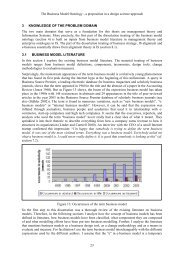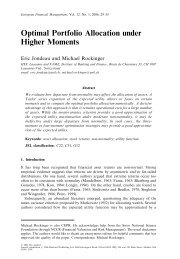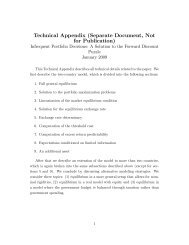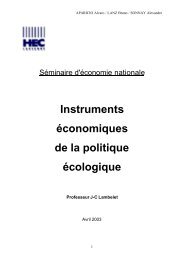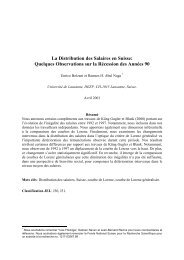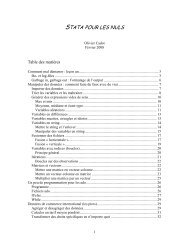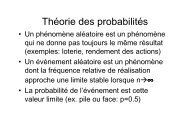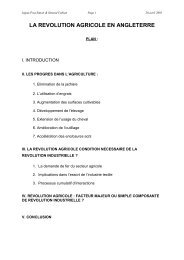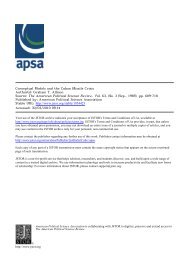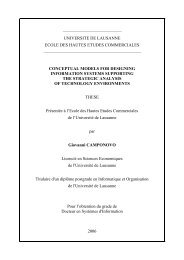Do consumer s tastes differ final 1.7. - HEC
Do consumer s tastes differ final 1.7. - HEC
Do consumer s tastes differ final 1.7. - HEC
You also want an ePaper? Increase the reach of your titles
YUMPU automatically turns print PDFs into web optimized ePapers that Google loves.
D O C ONSUMER’ S T ASTES D IFFER?<br />
significant ÷² values. Clements and Chen are unable to reject the Working’s model, it can be therefore<br />
seen as dominant and additionally it is not significantly <strong>differ</strong>ent from the more general Box-Cox-case.<br />
A possible defect of the Working’s model is that the budget share is a linear function of the logarithm<br />
of income so that the predicted budget share can fall outside the [0,1] interval for sufficiently high or<br />
low levels of income.<br />
Food income elasticity<br />
Clements and Chen then discuss how food elasticity changes with income. The Working’s model’s<br />
food income elasticity agrees with intuition. The elasticity ranks from 0.8 for the poorest country<br />
(Korea) to 0.2 for the richest (USA), with an average income elasticity for food of the OECD countries<br />
being smaller than of the LDC.<br />
For an estimation by least squares (model 2) however, the elasticities move in the wrong direction, in<br />
some cases an elasticity for rich countries of equal or higher than one has been found, indicating that<br />
food is a luxury. For the quadratic model (model 3), elasticities decrease too much with income so that<br />
food should be considered as an inferior for the six richest countries. As for the last two models, the<br />
change in value of the food elasticities are properties of the underlying models and not data<br />
dependent, they must both be considered as implausible models.<br />
In the last paragraph of their article, the authors find a “striking empirical regularity in the food price<br />
elasticity of demand” 13 after having compared the Frisch, Slutzky and Cournot own-price elasticities.<br />
As a conclusion of their research, Clements and Chen find that <strong>differ</strong>ences in price and income largely<br />
explain <strong>differ</strong>ences in consumption patterns.<br />
13 p.755, Clements and Chen (1996)<br />
B EKE T INNEBERG 10<br />
19 MARCH 2003




